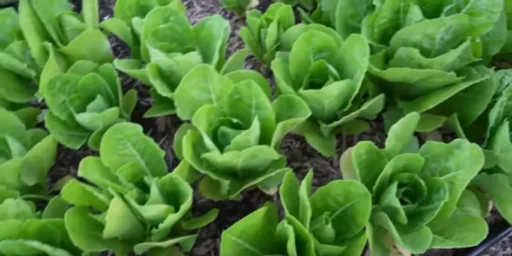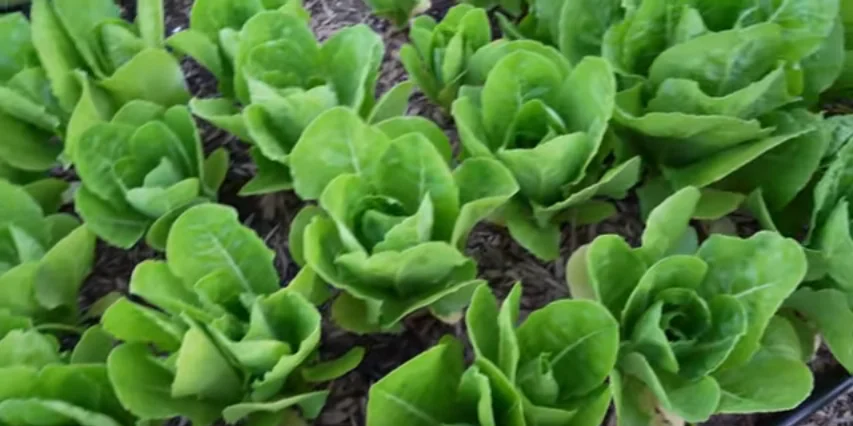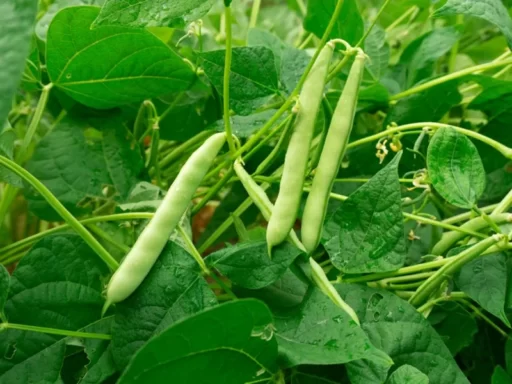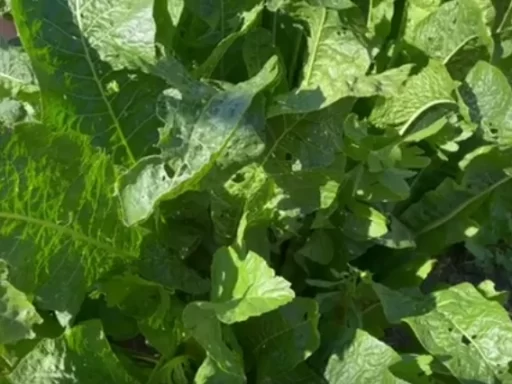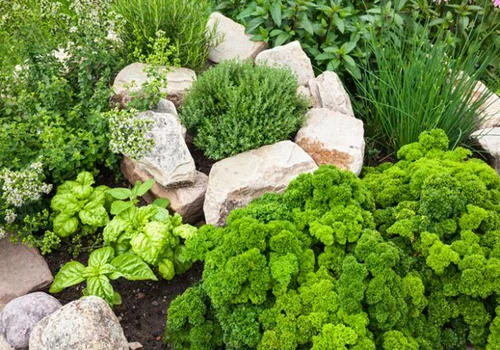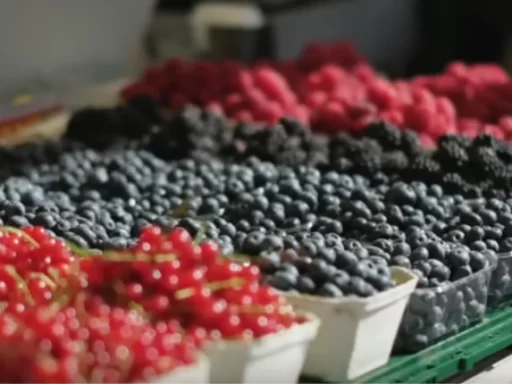Gardening in winter might seem challenging, but with the right techniques and plants, it can be a highly productive time for your garden. In this article, we’ll explore how to grow winter-friendly vegetables like salad onions, lettuce, and cauliflower, as well as how to nourish your soil with cover crops. Additionally, we’ll introduce a fascinating plant called the oyster leaf plant, which adds a unique flavor to your culinary arsenal.
Growing Salad Onions in Winter
Salad onions, also known as spring onions or scallions, are a versatile and essential vegetable for any garden. If you’re looking to get one last sowing of salad onions before winter fully sets in, it’s important to act quickly and provide some cold protection.
Choosing the Right Variety
Late in the season, you should opt for a hardy variety of salad onions. These types can withstand colder temperatures, allowing them to thrive through the winter months. Make sure you’re working with fresh seeds, as onion seeds have a notoriously short shelf life and may not germinate properly if stored for too long.
Preparing the Soil
Start by ensuring that your soil is weed-free and enriched with organic fertilizer. Rake the fertilizer into the soil to ensure an even distribution of nutrients. Next, mark out your rows or drills using a trowel or hoe. The rows should be about one centimeter deep and spaced four to six inches apart.
Sowing the Seeds
When sowing salad onion seeds, aim to drop one or two seeds every half-inch. Taking your time with this step will save you effort later on by reducing the need to thin out excess seedlings. After sowing, cover the rows with soil and water them thoroughly. Keep the area weed-free as your onions grow through the winter, and if temperatures drop, consider setting up a temporary cold frame to protect them from frost.
Winter Lettuce: A Cold-Hardy Salad Option
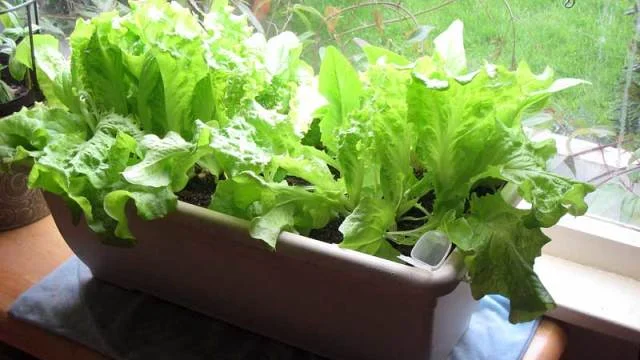
Winter lettuce is another excellent crop to sow in the colder months. There are many hardy varieties of lettuce, such as Winter Gem, Arctic King, and Winter Density, that can survive low temperatures. These can be sown throughout the winter, especially if you can provide some protection from the elements.
Starting Lettuce Indoors
While you can sow winter lettuce directly into prepared soil, starting them in plug trays offers extra protection against pests like slugs. In each plug, sow two seeds, and thin out the weaker seedling once they sprout. Once your seedlings are a bit larger, they can be transplanted into the garden.
Transplanting and Protecting Lettuce
When transplanting lettuce, space the plants about 20 centimeters apart in both directions. Enrich the soil with compost before planting to ensure a healthy start. To protect your winter lettuce from frost, cover them with a simple polythene tunnel. This will help trap warmth and encourage growth throughout the cold months.
Cauliflower: A Versatile Winter Vegetable
Cauliflower is a delicious and versatile vegetable that can be grown over the winter with proper care. This crop can be used in a variety of dishes, including curries, soups, and even as a low-carb alternative to rice.
Autumn-Sown Cauliflower
Sowing cauliflower in autumn gives you the chance to harvest an early crop next summer. Autumn-sown cauliflowers tend to avoid the harsh heat of summer and can also escape pests like caterpillars. Starting your cauliflowers under cover, such as in a cold frame, helps protect the young plants from birds and pests.
Sowing and Transplanting
Sow the cauliflower seeds in a high-quality potting mix, and keep the seedlings protected under a cold frame. Once they reach about six inches in height, they can be transplanted into the garden. Space them 45 to 60 centimeters apart to give them room to grow. Be sure to keep the plants well-watered and continue offering protection from cold snaps.
Cover Crops: Nourishing Your Soil for Spring
With summer crops clearing out, now is the perfect time to sow a cover crop, also known as green manure, to improve your soil’s health. Cover crops help protect the soil from erosion, add nutrients, and enhance its structure.
Choosing a Winter Mix
A winter cover crop mix typically contains two key components: winter vetch and ryegrass. Winter vetch fixes nitrogen at the roots, which will benefit future crops, while ryegrass has deep roots that help break up compacted soil. Once the cover crop is sown, it will grow quickly and cover the soil through the winter months.
Sowing and Tending to Cover Crops
To sow your cover crop, broadcast the seeds evenly over the soil’s surface and rake them in to ensure good seed-to-soil contact. The autumn rains will take care of watering, and the cover crop will thrive without much further intervention. In early spring, a couple of weeks before you’re ready to plant, dig or hoe the cover crop into the soil. This will add valuable organic matter and improve the soil structure.
Oyster Leaf Plant: A Unique Addition to Your Garden
For gardeners seeking something truly different, consider growing the oyster leaf plant (Mertensia maritima). This unique plant, also known as the vegetarian’s oyster, has a salty, seafood-like flavor, making it a novel addition to salads and other dishes.
Growing Oyster Leaf Plant
The oyster leaf plant is native to the rocky shores of northern Europe and North America. It’s incredibly hardy and can withstand cold temperatures and even temporary submersion in seawater. To grow it successfully, you’ll need a well-drained soil mix, ideally composed of half potting mix and half sharp sand.
Sowing and Care
Each seed packet typically contains only a few seeds, so handle them carefully. Plant the seeds in pots, cover them with a thin layer of soil, and keep them in a cool place over the winter. In spring, when the seedlings emerge, transfer them to larger containers or plant them in a spot that receives morning sun and afternoon shade.
Frequently Asked Questions (FAQs)
- Can I grow salad onions in winter?
Yes, salad onions can be grown in winter if you choose a hardy variety and provide some cold protection, such as using a cold frame. - What are winter lettuces?
Winter lettuces are cold-hardy varieties that can grow through the winter months, such as Winter Gem, Arctic King, and Winter Density. - How do I protect my winter vegetables from frost?
You can protect winter vegetables by using cold frames, polythene tunnels, or cloches to trap warmth and shield them from freezing temperatures. - When should I sow cauliflower for a winter crop?
Cauliflower is best sown in autumn for a winter crop. This allows the plants to grow steadily and avoid heat and pests in the summer. - What is a cover crop, and why should I grow one?
A cover crop, also known as green manure, is a plant grown to improve soil health. It prevents erosion, adds nutrients, and enhances soil structure. - How do I grow oyster leaf plants?
Oyster leaf plants need well-drained soil and cool temperatures. Start the seeds in pots, keep them in a cold frame over winter, and transplant them in spring. - What vegetables are best for winter gardening?
Salad onions, winter lettuces, cauliflowers, and cover crops are all excellent choices for winter gardening.

